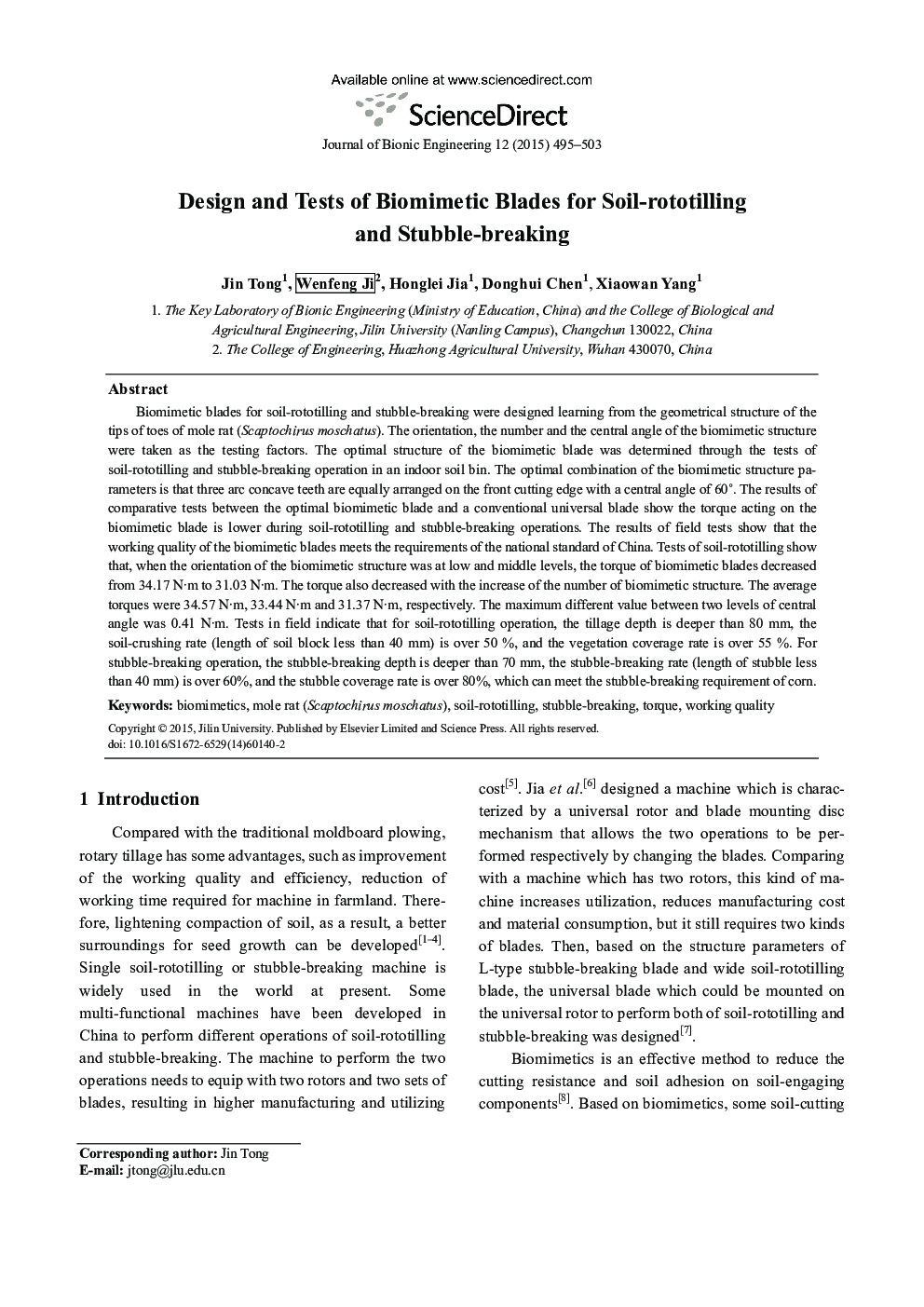| کد مقاله | کد نشریه | سال انتشار | مقاله انگلیسی | نسخه تمام متن |
|---|---|---|---|---|
| 826652 | 907942 | 2015 | 9 صفحه PDF | دانلود رایگان |
Biomimetic blades for soil-rototilling and stubble-breaking were designed learning from the geometrical structure of the tips of toes of mole rat (Scaptochirus moschatus). The orientation, the number and the central angle of the biomimetic structure were taken as the testing factors. The optimal structure of the biomimetic blade was determined through the tests of soil-rototilling and stubble-breaking operation in an indoor soil bin. The optimal combination of the biomimetic structure parameters is that three arc concave teeth are equally arranged on the front cutting edge with a central angle of 60°. The results of comparative tests between the optimal biomimetic blade and a conventional universal blade show the torque acting on the biomimetic blade is lower during soil-rototilling and stubble-breaking operations. The results of field tests show that the working quality of the biomimetic blades meets the requirements of the national standard of China. Tests of soil-rototilling show that, when the orientation of the biomimetic structure was at low and middle levels, the torque of biomimetic blades decreased from 34.17 N·m to 31.03 N·m. The torque also decreased with the increase of the number of biomimetic structure. The average torques were 34.57 N·m, 33.44 N·m and 31.37 N·m, respectively. The maximum different value between two levels of central angle was 0.41 N·m. Tests in field indicate that for soil-rototilling operation, the tillage depth is deeper than 80 mm, the soil-crushing rate (length of soil block less than 40 mm) is over 50 %, and the vegetation coverage rate is over 55 %. For stubble-breaking operation, the stubble-breaking depth is deeper than 70 mm, the stubble-breaking rate (length of stubble less than 40 mm) is over 60%, and the stubble coverage rate is over 80%, which can meet the stubble-breaking requirement of corn.
Journal: Journal of Bionic Engineering - Volume 12, Issue 3, July 2015, Pages 495-503
